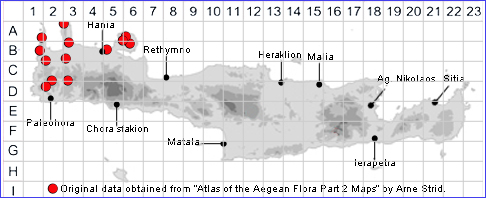SPECIES DESCRIPTION
CROCUS CARTWRIGHTIANUS
Family and Genus:- See- IRIDACEAE
Common Names:- Wild saffron crocus.
Homotypic Synonyms:- Crocus sativus var. cartwrightianus, Crocus sativus
subsp. cartwrightianus.
Meaning:- Crocus (Gr) Thread, (reference to the stigmas of Crocus sativus).
Cartwrightianus (L) For J. Cartwright the British Consul in
Constantinople who discovered this crocus in c.1844
General description:- Low cormous perennial.
Corm:-
1) Depressed-globose,10-15 mm in diam., tunics thin, ± dissolving into fine,
reticulate fibres, extended into a neck.
Leaves:-
1) Several (5-11), synanthous, equalling or exceeding the flowers, narrow (1-1.5
mm wide), greyish-green with white median stripe.
Flowers:-
1) Pale to deep lilac-purple, strongly darker veined on the outside, often stained
darker towards the base, occasionally pure white.
2) Tepals, oval, broadest above the middle, 14-32 mm long.
3) Stamens, with yellow anthers and whitish or purplish stalks.
4) Style, divided into 3 very long deep red branches, flared at the tips, each 15-27
mm long.
Fruit:-
1) Capsule, cylindrical or ellipsoid, maturing at or above ground level by elongation
of the pedicel.
2) Seeds, numerous, usually globose or ellipsoid, brownish or reddish, with a
strophiole.
Key features:-
1) Fibres, of outer corm-tunic finely to coarsely netted, sometimes obscurely so.
2) Style, deeply divided into 3 simple branches, not at all subdivided at the apex.
3) Bract, and bracteole present, white-membranous, rather flaccid, not closely
sheathing the perianth-tube.
Habitat:- Open dry shrubby vegetation and open coniferous woodland on rocky
hillsides. 0-500(-900) m. on various substrates.
Distribution:- Endemic to Greece, and Crete. On Crete it has been found only in
the west, initially on the Akrotiri peninsula.
Flowering time:- Late Oct to early Jan.
Photos by:- Fotis Samaritakis

